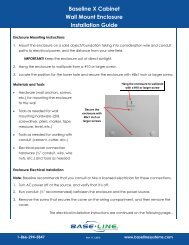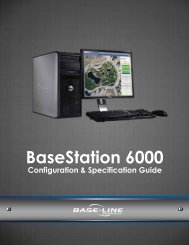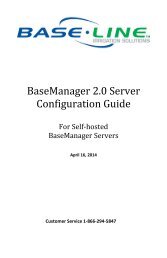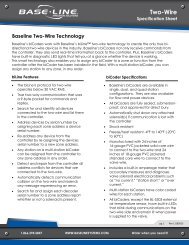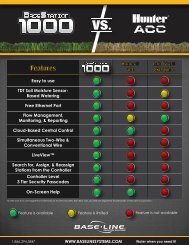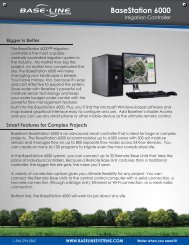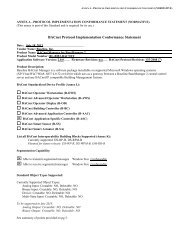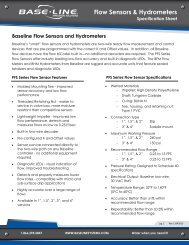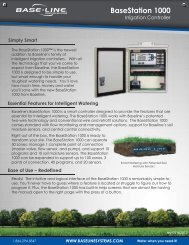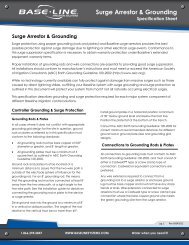BaseStation 3200 User Manual - Baseline Systems
BaseStation 3200 User Manual - Baseline Systems
BaseStation 3200 User Manual - Baseline Systems
Create successful ePaper yourself
Turn your PDF publications into a flip-book with our unique Google optimized e-Paper software.
C h a p t e r 1 – G e t t i n g S t a r t e dDealing with Slopes and BermsSteep slopes and berms are possibly the most difficult landscape areas to irrigate efficiently.Runoff is the main issue, but there are also often subsurface drainage issues that can result insoaking wet low areas and bone dry high areas. Construction of berms often requirescompaction of the central mass, which can also cause water movement and drainage issues.Soil Moisture Sensors can be an excellent tool to optimize watering for slopes and berms, sincethe sensor can detect how much irrigation water is actually infiltrating the upper levels of theslope or berm.Particular care must be taken to set proper soak and cycle times for slopes and berms – someslopes can require that total run time is broken into 5 or more cycles.Top 1/3 of the slope, andnot at the crownIn the top 1/3 of the rootzone (2-3” for turf grass)Not sideways to theslope.Optimal biSensor Placement for Slopes and BermsIf the slope or berm is irrigated as a part of a larger zone that is mostly level, then it isrecommended that the sensor is placed in the larger level area. However, for most efficientresults, slopes and berms should generally be broken into separate zones.Burying the biSensorThe biSensor should be installed in accordance with the installation instructions included with it.When installing a biSensor in an established landscape, care should be taken to disturb thesurrounding soil as little as possible – this reduces the chance that adjustments will be neededlater.In general, biSensors should be installed in the top 1/3 of the root zone for the plant that is beingirrigated. In the case of turfgrass, the top of the sensor blade should be 2” to 3” from the bottomof the thatch layer. Burying the moisture sensor too deep can cause poor results. If the sensoris deeper than the top 1/3 of the root zone, these roots can become toodry and the plants may become stressed.Page 27<strong>Baseline</strong> <strong>3200</strong>



